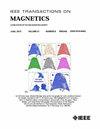Multi-Physics Field Coupling Modeling and Thermal Distribution Analysis of Underwater Rotary Magnetic Coupling Mechanism
IF 2.1
3区 工程技术
Q3 ENGINEERING, ELECTRICAL & ELECTRONIC
引用次数: 0
Abstract
The underwater wireless power transfer (WPT) technology provides an effective solution to underwater energy transfer without direct electric contact, and the underwater electromagnetic coupler (UEC) of the WPT system is a critical component in realizing the technology. This article introduces a novel secondary rotary banner UEC structure that meets the high efficiency and reliability requirements for wireless charging of autonomous underwater vehicles (AUVs), while providing the benefits, such as low-temperature rise, easy charging alignment, lightweight design, and strong offset resistance. Based on the strong relationship between the UEC’s temperature rise and the reliability of the underwater WPT system, electromagnetic-thermal-fluid multi-physics coupling simulation models are established for three secondary rotary UECs to compare different secondary-side structures, effectively addressing the challenges of estimating the temperature distribution related to uneven power losses. To further realize accurate calculation of the thermal distribution, the effects of seawater eddies, seawater heat exchange, and the shell are considered. The simulation and experimental results show that the comprehensive performance index of the secondary full-banner UEC is superior, and the temperature rise distribution of the established physical model can be used to accurately predict the actual situation. The maximum error between simulation and practical measurement is 2.45%, which verifies these models, and provides a theoretical basis for improved heat dissipation design of the UEC.求助全文
约1分钟内获得全文
求助全文
来源期刊

IEEE Transactions on Magnetics
工程技术-工程:电子与电气
CiteScore
4.00
自引率
14.30%
发文量
565
审稿时长
4.1 months
期刊介绍:
Science and technology related to the basic physics and engineering of magnetism, magnetic materials, applied magnetics, magnetic devices, and magnetic data storage. The IEEE Transactions on Magnetics publishes scholarly articles of archival value as well as tutorial expositions and critical reviews of classical subjects and topics of current interest.
 求助内容:
求助内容: 应助结果提醒方式:
应助结果提醒方式:


